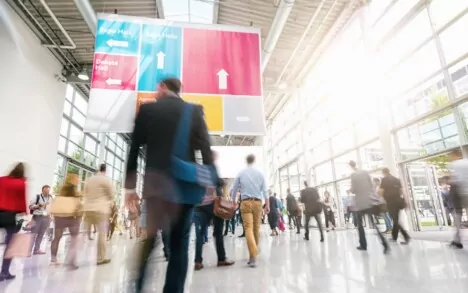Introduction
With the EU GMP Annex 1 “Manufacture of Sterile Medicinal Products” [1], which came into effect as of August 2023, companies are now being inspected by the regulatory authorities against the guidelines and are receiving observations in cases of non-compliance.
Although the revision seeks to remove ambiguity and inconsistencies, there are still open-ended questions and challenges for both industry and regulators. These were addressed during the ISPE Annex 1 Workshop event in Waterford, Ireland. During the seminar, participants heard from industry experts and regulators about their experiences with regulatory inspections, typical issues, associated challenges, and possible solutions for ensuring compliance with Annex 1.
Discussions centered on how to interpret some of the text of Annex 1, not only by the industry but also by regulators. Emphasis was given to the development and use of new technologies and the importance of training and qualification of personnel– not only from a compliance perspective, but also when it comes to employee retention and knowledge management within a company.
Developments in new robotic filling platforms
Annex 1 emphasizes the need for companies to consider the use of appropriate technologies, such as Restricted Access Barrier Systems (RABS), isolators and robotic systems to increase the protection of the product from potential extraneous sources of contamination. Regulators have placed an emphasis on engineering solutions to remove human operators from the critical production steps to minimize the risk of contamination.
Robotic platforms are also seen as ways to address challenges such as long lead times, often exceeding 2 years for high-speed filling lines, and increasing costs. Manufacturers of filling lines also spoke about the need for more customized equipment to fulfil clients’ needs. This has led to greater complexity in designing, building, and qualifying the equipment.
A potential solution presented during the event was the development of a fully robotic fill line. One presenter noted that because filling lines are getting smaller, it created challenges in maintaining constant pressures in the enclosure, making accessibility difficult for operators during set-up activities and potentially causing contamination issues.
To overcome these challenges, the company designing the robotic fill line decided to increase the space and size of the isolator. The result was a “plug and play” filling machine in a fully closed isolator. Benefits presented were that all qualifications, such as airflow studies and decontamination cycles, were completed at the factory before it was shipped to the customer.
Some features, shown in a video presentation, were the loading of tubs holding the pre-sterilized containers by an operator from an adjacent room, loading of stoppers and caps via Rapid Transfer Ports (RTPs) and a full robotic execution of environmental monitoring sampling. A so called “butler robot” replenished environmental monitoring plates inside the Grade A zone and exchanged parts of the robots that handled the filling operations at the different parts of the unit.
Besides the European Medicines Agency (EMA), the US Food and Drug Administration (FDA) also encourages the development and use of new technology and engineering solutions when it comes to pharmaceutical manufacturing. In 2014, the FDA established the Emerging Technology Program (ETP) [2] and the concept of the fully robotic, humanless filling line was presented to their Emergency Technology Team (ETT). The FDA provided a positive response to the technology and the approach that was taken [3]. The example presented proves that such concepts can work and are accepted by regulators when implemented in the correct way, paving the way to further leverage technology as it evolves.
Personnel and Training
The pharmaceutical industry in Ireland is expanding, with companies building new facilities or expanding their activities. The need for skilled workers comes with a number of challenges, such as employee retention, the duration of onboarding and personnel not operating in their mother tongue.
An additional challenge that the demand for more skilled workers raises is ensuring they understand the key objectives of Annex 1, which is the protection of patients through the prevention of microbial, particulate or pyrogen contamination. Speakers emphasized the importance of having a solid training and qualification program for both new and existing employees to help achieve compliance and safe products. The level of training needs to be based on the work the person is doing. Furthermore, the quality and effectiveness of training is key, as it has an impact on the employee’s confidence and product quality as well as on personnel retention.
The presentation emphasized that the ”how, what and why” are important in all training aspects. How does equipment work and why is it operating in a certain way? Personnel must absorb, retain, and apply what is learned. To achieve this, there are different training methods that can vary from instructor led coaching to digital platforms, including the use of multi-media and virtual reality. One presenter noted that it is important to recognize the capacity to absorb what is taught and to consider how each person learns – for example, visually or aurally. Learning should also be organized in manageable bitesize chunks. Aural and visual training must complement one another to achieve its full potential and personnel should always be allowed to learn from their mistakes.
As was discussed, despite promising new and future technologies to help the manufacture of sterile medicinal products, the human factor remains one of the most important elements in the success or failure in the manufacturing of quality products.
A regulatory perspective on Annex 1 since it came into operation
It was reiterated during the workshop that the overall intent of the new Annex 1 was to provide clarity on current practices, addressing new technologies and encouraging the use of these new technologies.
From the first publication of the draft text of Annex 1, the emphasis has been on having a Contamination Control Strategy (CCS) implemented and described. Quality Risk Management (QRM) and the development of a CCS are almost synonymous, with different pillars in place that support and augment each other to form an overall effective strategy. As the Regulator mentioned, most companies now have a CCS in place and the next focus is to keep it as a live document and revisit it periodically. The challenge will be to keep it up to date. Regulatory bodies want to see the actions taken by a company if one of the pillars of a CCS fails. When deviations occur or changes are implemented through a change control process, how do these impact on the CCS? The emphasis now is not just on having a CCS available but how it is maintained. One of the deficiencies seen by the regulators during inspections is that companies are not maintaining the CCS as a living document.
The final version of the Annex 1 was published in August 2022 and companies had a year to perform a gap assessment and implement remediation actions to become compliant with the guidelines. However, it was mentioned during the presentation that regulators have observed that such gap assessment has not been made. Gap assessments are expected to be accurate and in accordance with Annex 1 requirements. The document should reflect the current state with an action plan in place to bridge the gap to move to the desired state. The expectations are that the remediation plan is followed with interim actions in place to mitigate against any potential risks and prioritization of actions based on the level of risk. These actions should be part of the company’s Quality management System (QMS), and associated CAPAs must have a clearly defined action, action owner and a due date. The presented outlined that targets must be realistic, and another important aspect is that the gap assessment is correctly assessed with evidence that it was checked by an independent person.
During the presentation it was mentioned that common deficiencies seen during inspections since the Annex 1 became effective were that a gap assessment was present, but there was a lack of visibility and transparency regarding the gaps. Observations were made because companies had no prioritization of compliance gaps and where actions were identified, these were assigned to the microbiology lab and not necessarily to the right subject matter expert. Another observation presented was that gap assessment and associated actions were not part of the company’s QMS and the action plans were not followed, with overdue actions reported without further justification or interim measures to mitigate these.
The discussion also highlighted another frequent question raised during inspections of manufacturers of non-sterile medicinal products, which is when Annex 1 should be applied. As described in the scope section of Annex 1, the intent of the Annex is to provide guidance for the manufacture of sterile products. However, some of the principles and guidance may be used to support the manufacture of other products that are not intended to be sterile, but where the control and reduction of microbial, particulate and endotoxin/pyrogen contamination is considered important. Even though non-steriles like biologics and dug substances have a bioburden allowance, these are typically produced at 0 CFU and need to be manufactured with some of the principles of Annex 1. As such, the guidance from Annex 1 on how to manage and prevent contamination would apply. For example, if using a Grade C area for the manufacture of a product the same controls apply, including the requirement to wear facility socks. The presenter emphasized that if a non-sterile manufacturer decides not to use certain aspects from the Annex 1, then it should be justified why it was not used if there would be an expectation that it would be part to prevent contamination
Summary
Since August 2023 organizations have been expected to be compliant to Annex 1 and to have implemented the applicable guidelines to have their facilities, equipment and processes appropriately designed to protect their product from potential extraneous resources of contamination. As described in the Annex 1 and discussions during this seminar underscored, considerations for the use of new technologies should be made to reduce the contamination risk. Novel full robotic options in a humanless setting are available and their concepts and approaches endorsed by regulatory bodies.
Author
Patrick Nieuwenhuizen
Director / Principal Consultant at Cencora PharmaLex
References
1. EudraLex Volume 4 Good Manufacturing (GMP) Guidelines – Annex 1, Manufacture of Sterile Medicinal products (2022) . Accessed through: https://health.ec.europa.eu/system/files/2022-08/20220825_gmp-an1_en_0.pdf
2. US Food and Drug Administration – Emerging Technology Program. Accessed through https://www.fda.gov/about-fda/center-drug-evaluation-and-research-cder/emerging-technology-program-etp
3. FDA – Transcript: Emerging Technology Program. Accessed through https://www.fda.gov/about-fda/center-drug-evaluation-and-research-cder/transcript-emerging-technology-program








